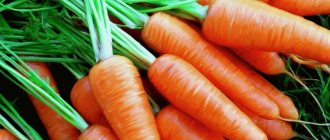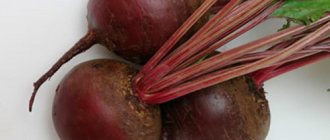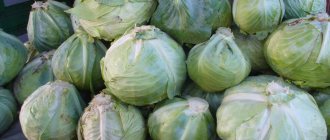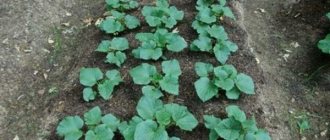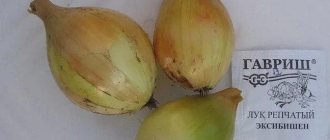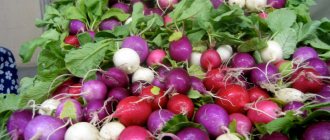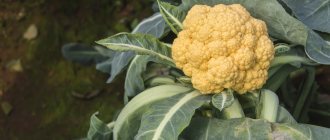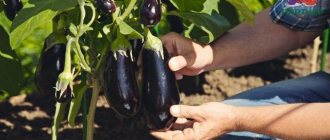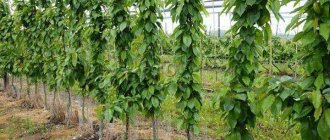Seeds of the best varieties of early cabbage for open ground with a description
What are good about early varieties is that the harvest can be harvested not in September, but much earlier. And if you plant different types at the same time, then you can provide yourself with cabbage all season.
Although the early one is harvested already three months after planting in the ground, but they have a low "keeping quality" and low weight qualities. That is, the heads of early varieties are small and loose in size. Therefore, they are more suitable for fresh consumption.
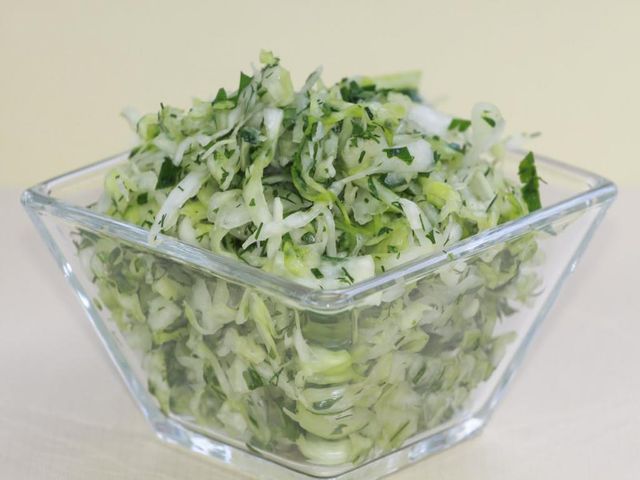
The main difference between the early varieties from the rest are:
- Ripening terms. The early ones ripen within 90-120 days after planting in the ground. The crop can be harvested already in the middle of summer.
- Leaves are juicy, herbaceous green, small loose heads of cabbage.
- They are unpretentious when grown, they can grow densely and on not very good soil.
However, early varieties are less resistant to disease than medium and late varieties.
Some gardeners pickle early cabbage, the taste is no worse than others. But here it is worth remembering that both fresh heads of cabbage are not stored for long: from 8 to 10 weeks, and in the form of pickles - only from 3 to 4 months. After this period, the cabbage becomes soft and stops crunching.
But I think that in the summer it is better to use it fresh, and to prepare pickles, wait until autumn, when the late varieties ripen. They are stored for a long time, the blanks from them are not only tasty, but they can be stored even until the next harvest.
Seeds of early cabbage are common and hybrid. Among the usual varieties, I would like to note the following, which are the most popular.
June
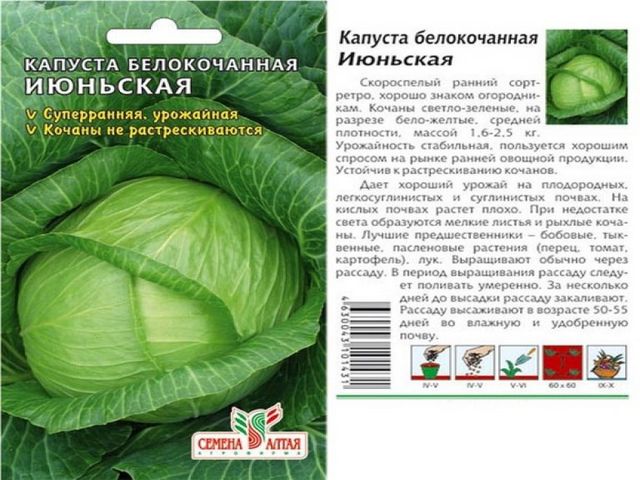

Ultra-ripe, the harvest is removed by the end of June. The growing season is 90-100 days. The heads of cabbage are slightly flattened, not very dense, but also not very loose. Heads weigh from 1 to 2.5 kg. About 5 kg of cabbage can be harvested per square meter.
The variety can withstand small and short temperature drops down to -5 ° C. Heads of cabbage can crack in case of sudden changes in temperature.
Dietmar early
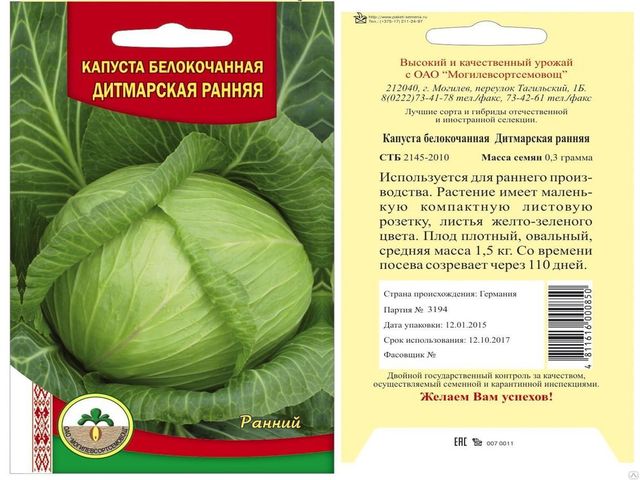

The variety is originally from Germany. Ripens 110 days after germination. The head of cabbage is almost round and even in shape. It weighs from 1.5 to 2 kg. Up to 5 kg can be removed from one square meter. It is not affected by rot, but, in practice, is not stored and if not removed in time, it cracks.
Golden hectare
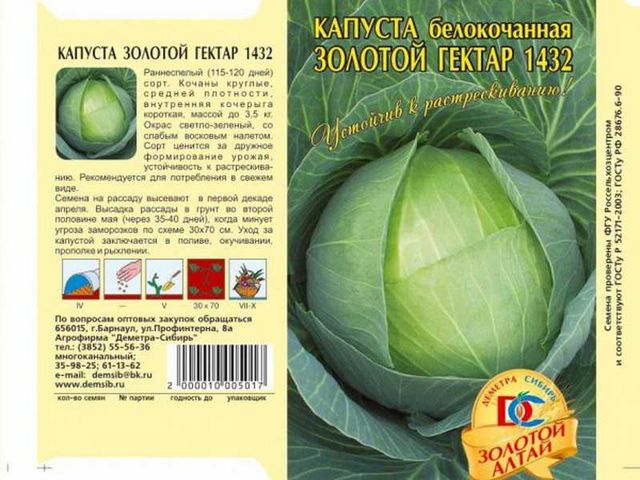

Medium early. Heads of cabbage are round, medium density, weighing from 1.6 kg to 3.3 kg. Productivity, unlike other early varieties, is quite high and is about 6-7 kg per square meter. It is also stored longer - up to 4-5 months.
Cabbage loves warmth, light and moisture, but can also tolerate small frosts. It is grown only in good fertile soil, needs additional feeding.
In terms of yield and taste, hybrids have no equal. However, they were withdrawn for this. However, seeds of hybrid varieties cannot be used for self-breeding.
Nozomi F1
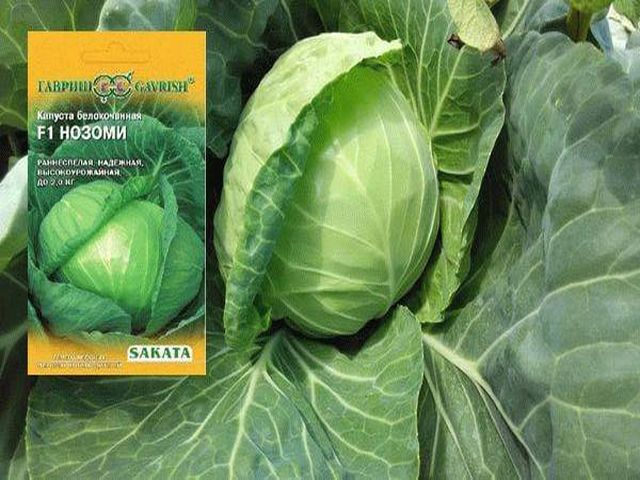

French variety, intended more for the territories of the North Caucasus. After planting the seedlings in the garden and before ripening, that is, when the heads of cabbage can be removed, it takes about 45 days. The weight of the head of cabbage is up to 1.5 kg, it does not crack.
Quite hardy, tolerates frost, but requires abundant watering.It has good immunity to fungal and bacterial diseases that are characteristic of this culture. Resistant to common disease, black leg.
Malachite F1
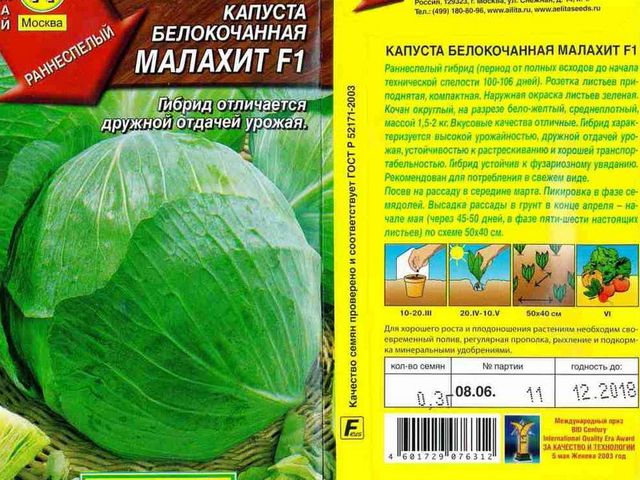

Maturation occurs in 100 days. The weight of a head of cabbage reaches 1.5 kg. About 6 kg can be removed from one square meter. Cabbage contains a lot of vitamin C, potassium, magnesium and iron.
Tobia F1
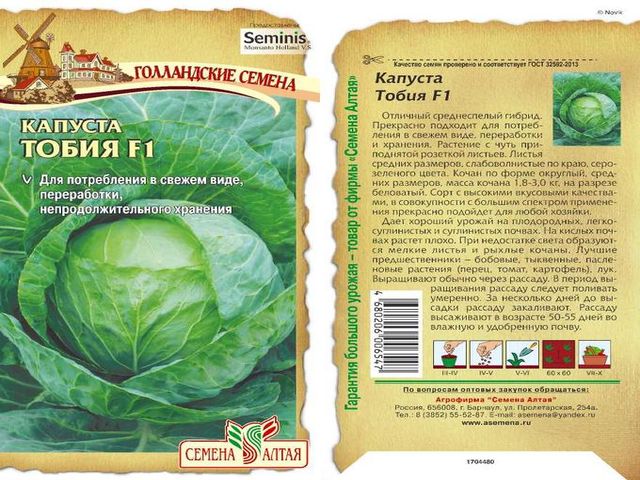

Mid-season hybrid with high yield. Heads of cabbage are smooth, even, rather dense inside. The weight of a head of cabbage is about 3.5 kg. Unlike most of these varieties, it is not prone to overripening, as a result, the heads of cabbage do not crack.
Since the leaves are able to retain flavor and "crunchiness", it can be used for pickling. The variety can be stored, but not for long, only about two months.
Miracle ultra early F1
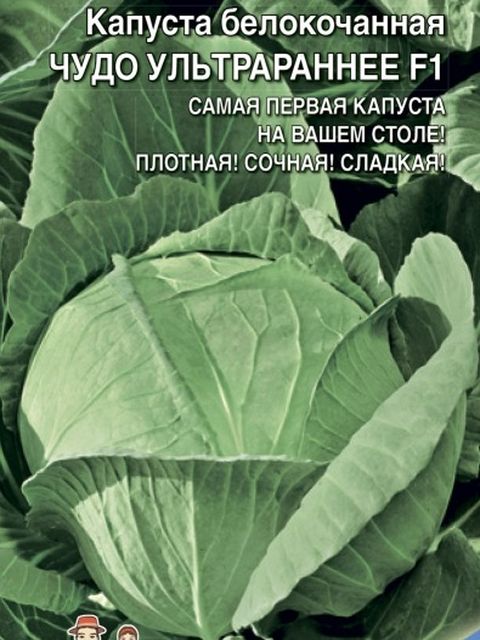

The head of cabbage of the variety is round, dense, weighing from 1 kg to 2.5 kg. It tastes juicy, it contains a lot of vitamins, macro and microelements. Quite resistant to disease and not susceptible to pests.
Arctic F1
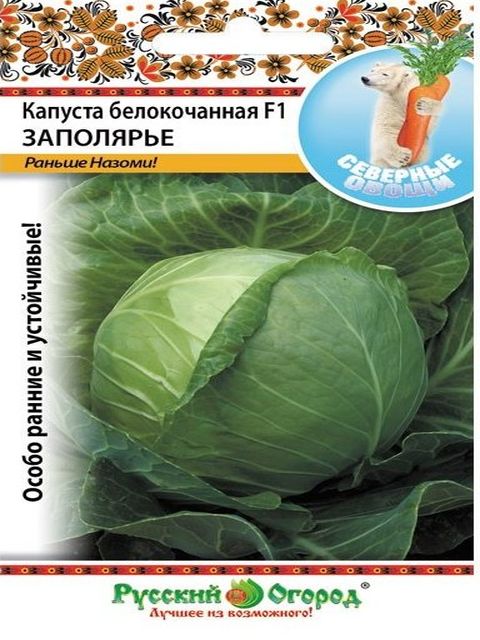

The name of the variety indicates that it is an early maturing variety, which is intended for northern regions with harsh climatic conditions. Therefore, the ripening period is very tight. Harvesting is carried out already 45 days after planting the seedlings in the soil. This hybrid tolerates low temperatures very well and is very demanding on light and watering.
Erroneous testis
Sometimes it happens that a plant of this culture in the first vegetative year suddenly took and released a shoot with flowers. Those who decide to collect such seeds from cabbage for further planting usually remain extremely unhappy. Seeds show poor germination, sprouts are weak, most do not set heads.
Cabbage is a two-year-old plant and must go through all stages of development for normal fruiting.
Therefore, a vegetable grower who decides to get cabbage seeds at home needs:
- choose the right heads of cabbage;
- dig up queen cells in time and create conditions for vernalization;
- prepare overwintered heads of cabbage for planting;
- prepare the soil and plant the stumps in the ground;
- take care of the seed plant throughout the season, huddle, water, tie up and remove excess shoots;
- harvest ripe pods in time.
Cabbage seeds for pickling, the best varieties for open ground
Basically, white cabbage is grown for pickling. But not all are equally well suited for these purposes. It is best to grow late varieties and mid-season.
Late ripening ones are those with a growing season of 160 days or more. In addition, their heads of cabbage are very dense due to the high content of dry matter.
Of the late, suitable for salting, the following popular varieties are most suitable.
Amager 611
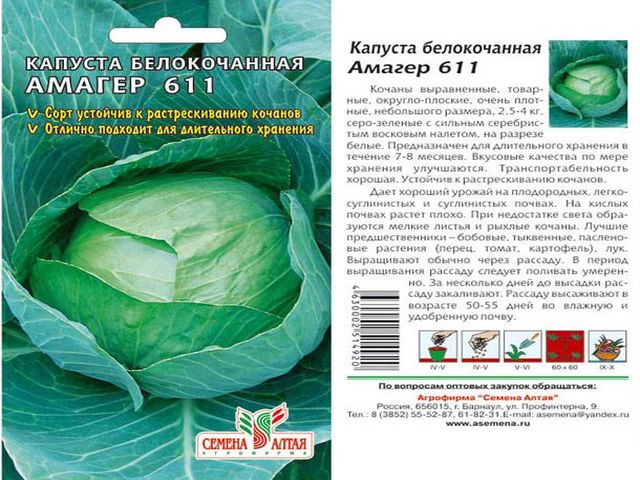

The variety is quite old, and therefore has proven itself well. It is planted practically throughout Russia, except for the northern regions. Frost-resistant, requires good fertile soil, a lot of moisture. The head of cabbage is round-flat, weighs from 3.5 to 4.5 kg, does not crack. As a result, it can be stored for a long time.
But, despite such good qualities, it is prone to diseases, fusarium wilting and vascular bacteriosis.
Moscow late 15
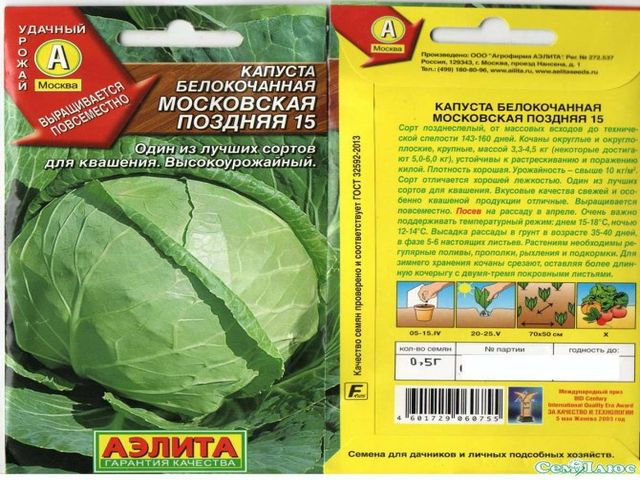

Differs in good taste, ideal for fermentation. Head of cabbage is round, on average it reaches 4.5 kg. However, there may be heads of cabbage and up to 6 kg in weight. Inside the head of cabbage is yellowish-white. Like the previous variety, it does not crack, but it is resistant to most diseases. It is unpretentious in cultivation.
It ripens in October, but individual heads of cabbage can be cut a little earlier. However, it is better to hold out until the end.
Geneva F1
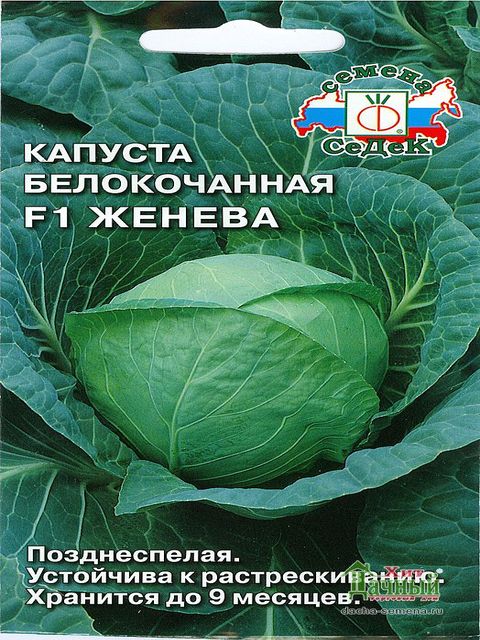

This hybrid has a high yield. The head of cabbage is dense, round, weighing from 3 to 5 kg. The ripening period is from 130 to 140 days.It can be stored for up to 9 months, which is ideal for transport. Good immunity to fusarium wilt.
Turkis
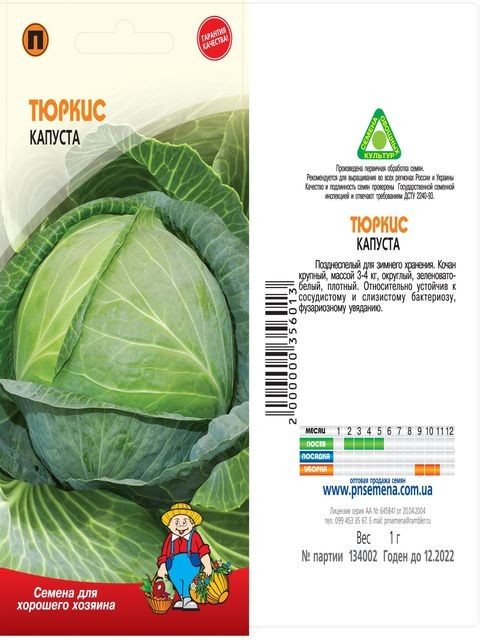

The variety of German production, according to reviews, is ideal for salting. Drought and disease resistant. Heads of cabbage are round, weighing no more than 2.5 kg. They contain a lot of sugar, and therefore, in addition to salting, they can also be used in the preparation of various dishes. The yield is quite high: up to 10 kg per square meter. Under optimal conditions it can be stored until next summer.
Belarusian 455


Most gardeners consider this particular variety to be the most suitable for fermentation. It is grown practically all over Russia. Moisture-loving and frost-resistant. Prefers fertile soils, which must be well moistened. The head is round, weighs up to 4 kg, does not crack. Possesses weak immunity to some diseases.
Refers to mid-season.
Aggressor F1
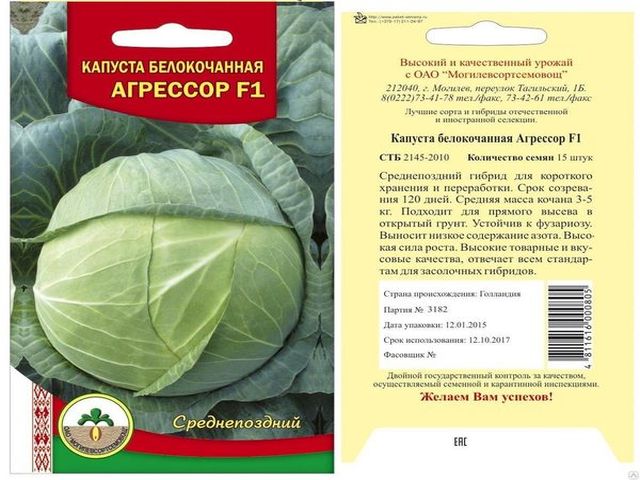

Another medium late variety of Dutch origin. The original name is apparently connected with its peculiarity to adapt well to weather changes, up to extreme ones. Possesses good productivity. The taste is just as good, which allows it to be used as versatile.
It is grown in the central regions of Russia, but it can also be planted in the south.
Medium late, its growing season is 130–150 days. However, it grows quickly and is resistant to diseases and pests. The weight of a head of cabbage is from 2 to 4 kg, it does not crack. It can be stored for up to 6 months. It is also popular because it is unpretentious when growing.
Flowering and collecting seeds
After planting, a correctly overwintered mother plant begins to form long shoots, on which flowers then bloom. Such a plant is called a testis.
The healthiest seed material can be obtained from the central shoots that have grown from the apical bud. Lateral shoots are cut, leaving only the strongest, if necessary. The plant may not overpower too much of the ovary. Therefore, weak and too late shoots are also removed. So that the long stems do not break off and lie down, it is advisable to tie them up.
The pods ripen at different times within 30-50 days. It is important not to miss the moment and not let the very first seeds wake up on the ground. They will produce the strongest and healthiest seedlings in the future.
Before collecting the seeds from the pods, they are tied into small sheaves and hung to dry. During the season, one plant can get 30-50 g of healthy seed. The collected seeds are stored in paper or cloth bags for 3-4 years.
White cabbage for open ground, the best varieties for storage
Just like salting, many are also interested in the duration of storage. Agree that having harvested, say, 20-30 heads of cabbage, we will want to save them in order to try fresh cabbage in winter. And if it will not be stored for long, then where will we go to this big harvest?
For long-term storage, the same late varieties are suitable, which are also subject to salting. Some of them were discussed above. But there are a number of other suitable for these purposes.
Snow White
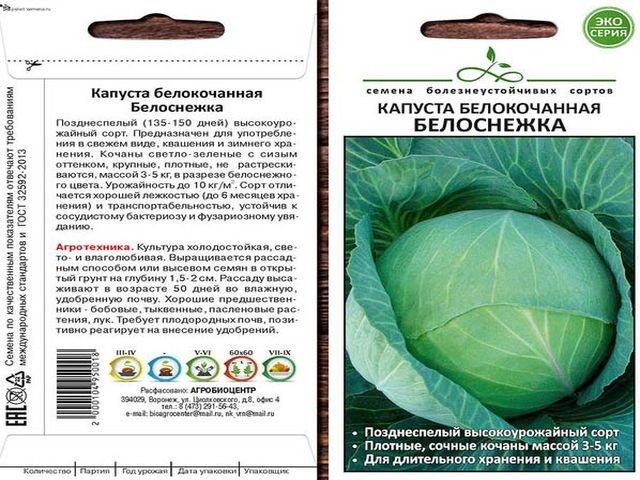

This late-ripening variety was bred back in Soviet times, but despite this, it is still popular with most gardeners. From the appearance of the first shoots to harvest, it takes from 4 to 5 months. Ripens in any weather, the heads of cabbage are round, dense and weigh from 2.5 to 4 kg. Do not crack. The variety has good resistance to both fusarium and mucous bacteriosis. But does not tolerate acidic soil.
Valentine F1
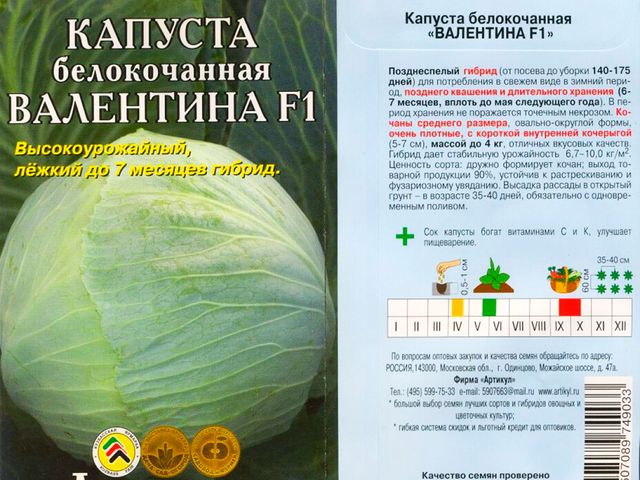

Unlike the previous varieties, Valentine is young. But despite this, it is quite well-known among gardeners. Shelf life is 7 months. Heads of cabbage are ovoid, dense, weighing up to 4 kg. It takes about 6 months from the appearance of the first shoots to harvest.
To taste, the cabbage is crispy, sugary, so it is just suitable for fermentation.
Gingerbread man


Another popular hybrid variety.Russian origin, bred for all regions of Russia. After the appearance of the first shoots and before harvesting, it takes 5 months. Heads of cabbage are round, dense, weigh about 5 kg, do not crack.
Languadeaker
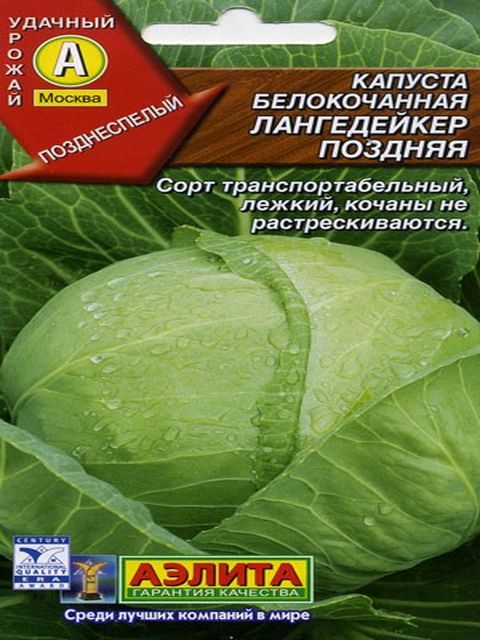

A variety of Dutch origin. It takes up to 6 months from the appearance of the first shoots to harvest. Resistant to major diseases, have a long shelf life. They do not deteriorate during transportation.
Mom F1
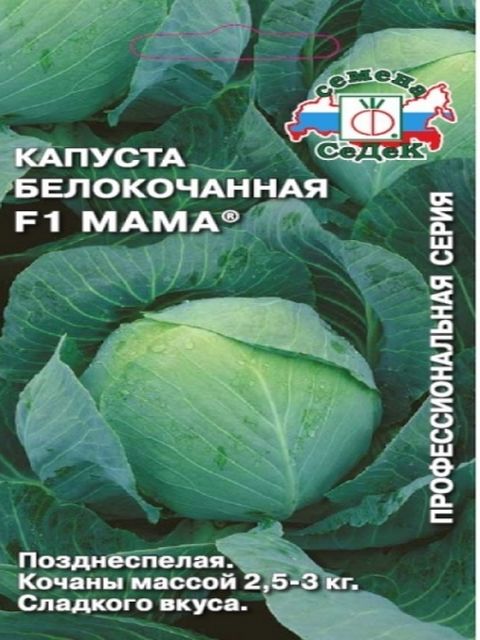

Local cultivation hybrid. Best suited for the Volga region. The heads of cabbage are not dense in structure, but they are stored for about 6 months.
It takes about 6 months from the first germination to the harvest. The heads of cabbage are not perfectly round, but slightly flattened, weighing about 2.5 kg.
Megaton F1
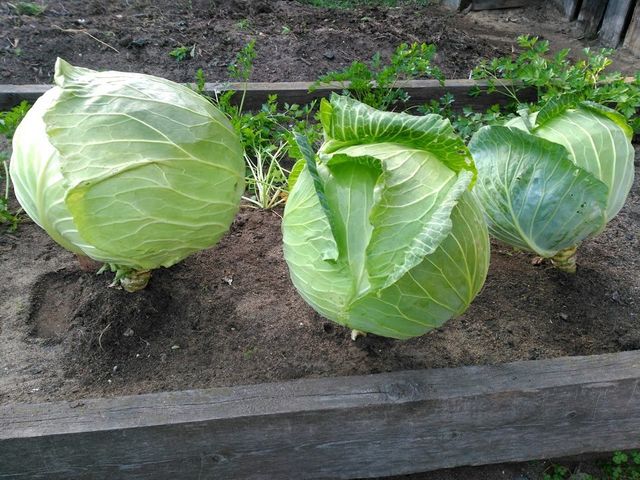

The variety is well-known among gardeners throughout the country. Bred in Holland. The ripening period is about 4.5 months. Heads of cabbage are dense, weighing up to 4 kg.
Among the advantages are excellent taste, high yield, resistance to most diseases, as well as pests. The heads of cabbage can be stored for up to 2.5 months.
Mara
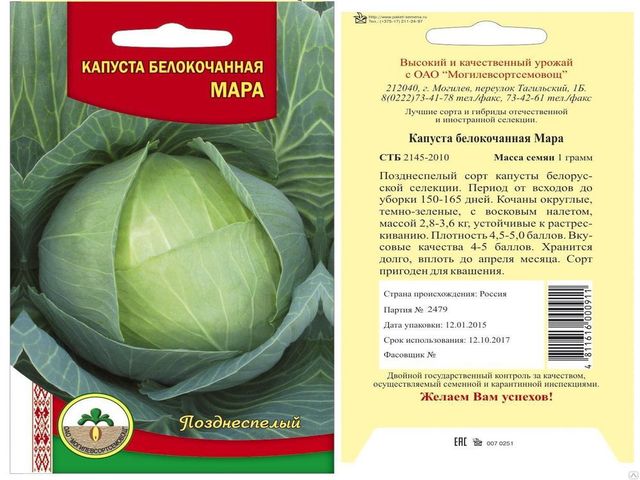

Belarusian variety that ripens 6 months after germination. Heads of cabbage are dense, weighing up to 4.5 kg. The yield is about 19 kg per square meter.
Moscow late
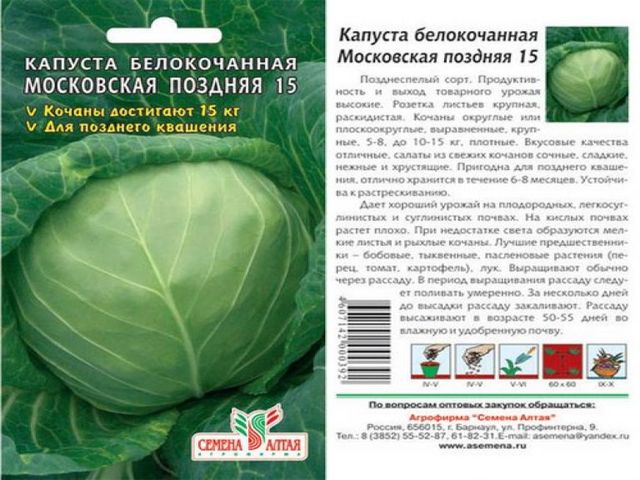

According to the standard, it is intended primarily for the Far East, as well as in the Central regions and in the North-West. Heads of cabbage can be stored until next summer. It can withstand cold snaps up to minus 10 degrees.
There are two varieties of the variety: Moscow late-15 and Moscow late-9. The first has a high stem. And the second is low susceptibility to disease.
If all these varieties differ in cultivation mainly in warm or more favorable climatic conditions, then their own species have been bred for harsh regions.
Vernalization
The mothers are laid out or hung in a dark basement with a temperature of 1-2 ℃ for the whole winter. Cabbage, for normal fruiting, must undergo vernalization. If the temperature is above 6-8 ℃, the metabolism will not slow down in the head of cabbage and the process of formation of generative organs will not start.
With further planting, the plant will simply give out a large number of leaves instead of peduncles. In winter, it is better not to disturb the heads of cabbage, to minimize exposure to light. A month before the planned planting, the temperature in the storage is slightly increased to + 5-6 ℃.
How to choose cabbage varieties for planting in open ground for the Urals
The Urals, like Siberia, are a region with harsh conditions. Growing in greenhouses is common here. However, it is possible to plant seedlings in open ground. To do this, it is necessary to select the appropriate varieties and adhere to favorable conditions.
The optimal time for planting seedlings in open ground is the beginning of June, when the temperature will be above zero day and night.
Most of the varieties listed in the section above and intended for cultivation in Siberia are also well suited for the Urals. The climatic conditions are practically the same here.
Transfer F1
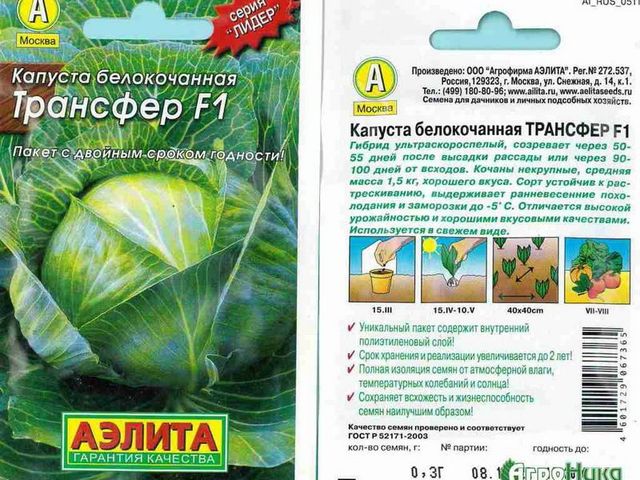

Ripening from planting seedlings occurs on the 45-55 day. After this period, you can harvest.
A head of cabbage is round, of medium size and medium density, weighing from 1 to 1.5 kg. At the same time, it reaches a height of 15-20 cm. The color of the head is white on the inside, and light green on the outside. It has good taste characteristics, so it is recommended to eat more fresh. The planted seedlings sprout amicably, are resistant to many diseases, including such as black leg and vascular bacteriosis. But it can become infected with gray rot. The yield is good and ranges from 4-5 kg per square meter. It is considered one of the best early varieties.
Midor F1
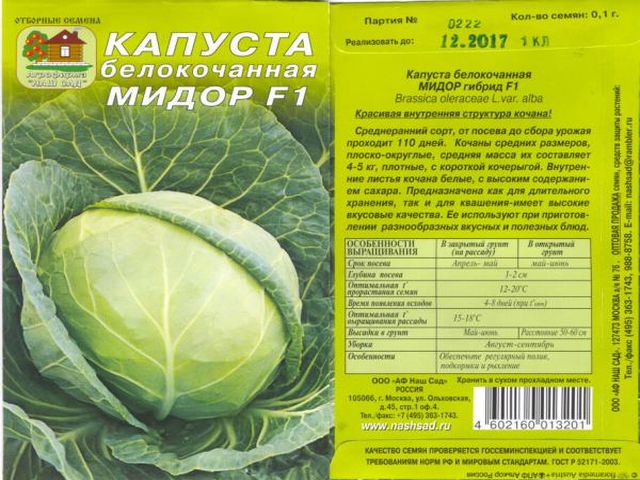

The hybrid is medium late in terms of ripening, which occurs in 140-160 days. The head of cabbage is round, dense, medium in size and has white leaves inside. Outside, they are bright green, have a slight waxy coating. Small stump. The variety is well suited for salads and preparations.
Krautman F1
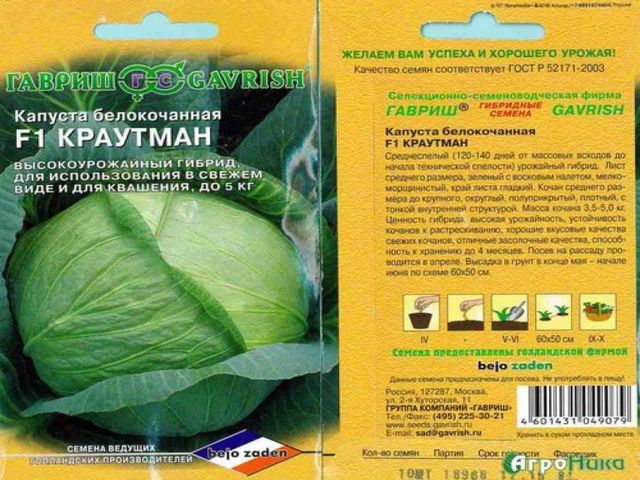

The hybrid is mid-season.Its leaves are dense and crunchy, the stalk, like the previous variety, is small. A head of cabbage weighs about 4.5 kg. Cabbage is not afraid of overflow and overexposure in the garden. At the same time, the heads of cabbage do not crack, are not subject to decay. It is also well stored - up to 4 months, all the taste is preserved. It is resistant to diseases, as well as to one of the most common for this species - keel. Good for pickling.
Merchant's wife
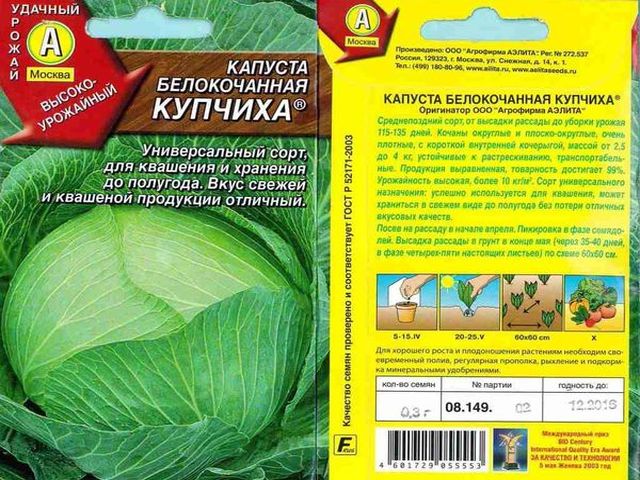

Another interesting mid-late variety. The head of cabbage is green on the outside, and white on the cut. The head of cabbage weighs up to 2.8 kg. The taste is very good, as a result it is suitable for pickling and fermentation. Disease resistant, can be stored for several months.
Rinda F1
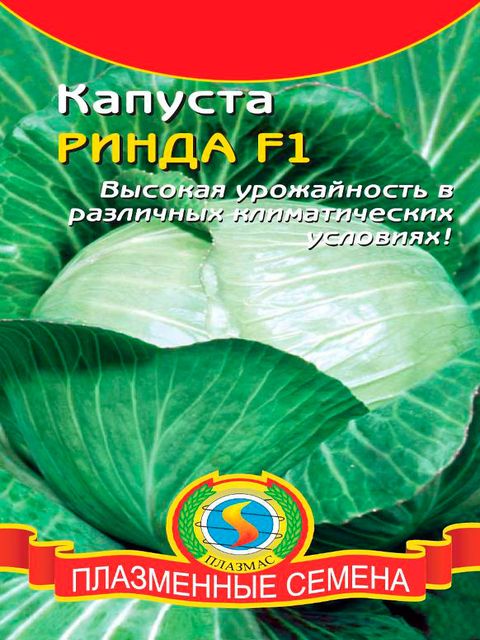

Good hybrid variety. Ripens in 76 days, i.e. relatively early. Heads of cabbage are round in shape, but not very dense. The leaves have excellent taste, no bitterness. This means that this variety is very well suited not only for fresh consumption, but also for preparing various dishes. It is grown more in the Urals, but it can grow in other climatic conditions, while it feels good. If you rarely plant seedlings, then you can get a big harvest. Seedlings are planted either in late spring, or, even better, in summer.
Uterus
Before growing cabbage seeds, it is necessary to select and correctly send mother liquors for wintering. Among the harvest ready for harvest, you need to notice the most beautiful healthy heads of cabbage with the following characteristics:
- not overgrown;
- the most appropriate to the description of the cultivated variety;
- not overfed with nitrogen;
- the strongest;
- on a thin outer stump;
- the most complete relative to the mass of the rest of the plant.
Selected heads of cabbage are carefully dug up together with the root until the first frost. The leaves of the cabbage are cut off, leaving 2-3 near the head of cabbage and sprinkled with wood ash or chalk. It is advisable to dip the rhizome in a clay mash to avoid drying out.
Important! If the plants come under early frost, then they are left in the ground for another week to recover.
Biological features of culture
Cabbage belongs to the Cruciferous family and has a two-year ripening period. Such a culture is propagated by seeds in the second year of life. As a rule, at this time, in place of the head of cabbage, long arrows develop, on which pods with seeds 8–10 cm long are formed. In this case, the stem itself often grows up to 160 cm or more (depending on the variety).
It is worth noting that some varieties of white cabbage can shoot arrows in the first year of life. But in this case, the seed is most often not yet ripe and will not give the expected yield. The same goes for hybrids. Many summer residents, planting varieties with the designation F1 on mother plants, wonder why the seeds do not sprout. Meanwhile, already in the second generation of hybrid varieties, the original qualities are completely lost, and at the genetic level, the characteristics of one of the varieties used in the breeding process appear.
Pest control
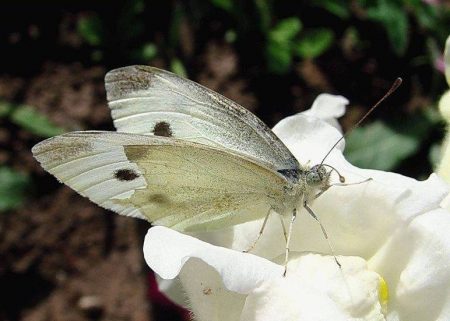

As soon as the mother liquors start to grow, pests begin to attack them:
- turnip white;
- cruciferous fleas;
- cabbage butterfly;
- weevil;
- bear;
- beetle larvae;
- cabbage moth.
Soil pests gnaw at the roots, causing plant death. To protect the mother liquors, during planting, each well is sprayed with a Vofatox solution. It is prepared in a proportion of 10 ml of the drug per 3 liters of water. Insects that have settled on cabbage suck juice from the leaves. You can find out about the presence of pests by looking at withered and yellowed foliage. Such plants are treated with insecticides: Aktellik, Decis, Aktara or Angio. The plantings are sprayed twice with an interval of 14-20 days.

